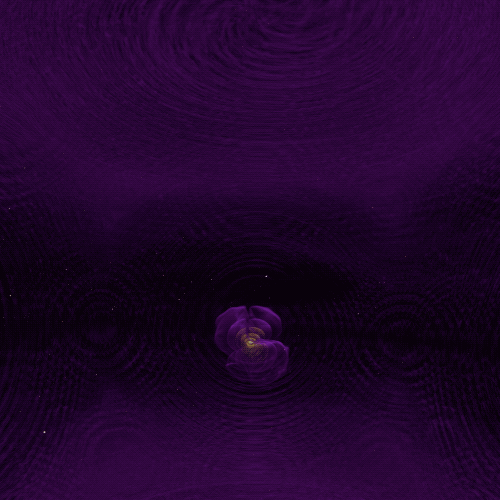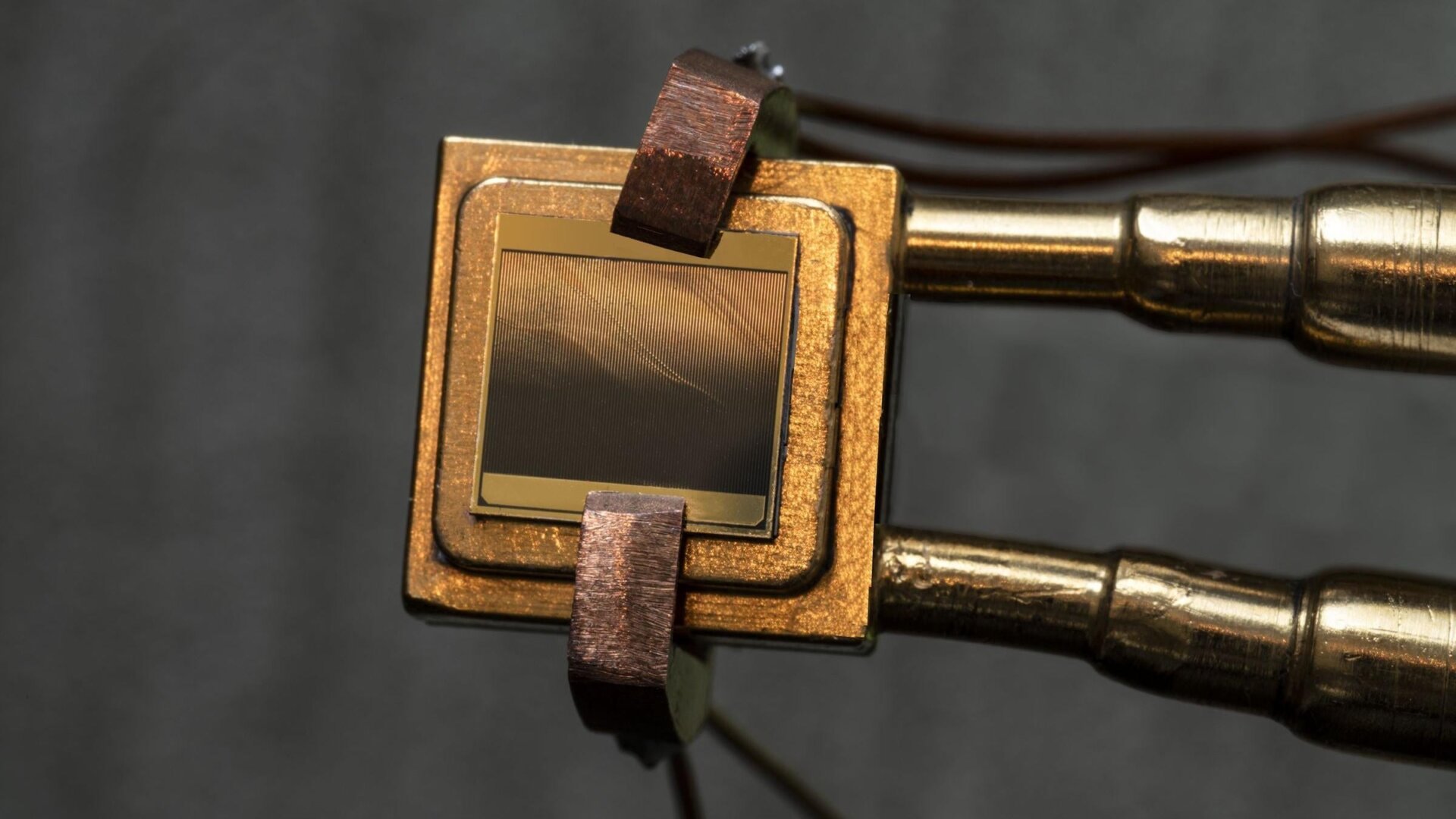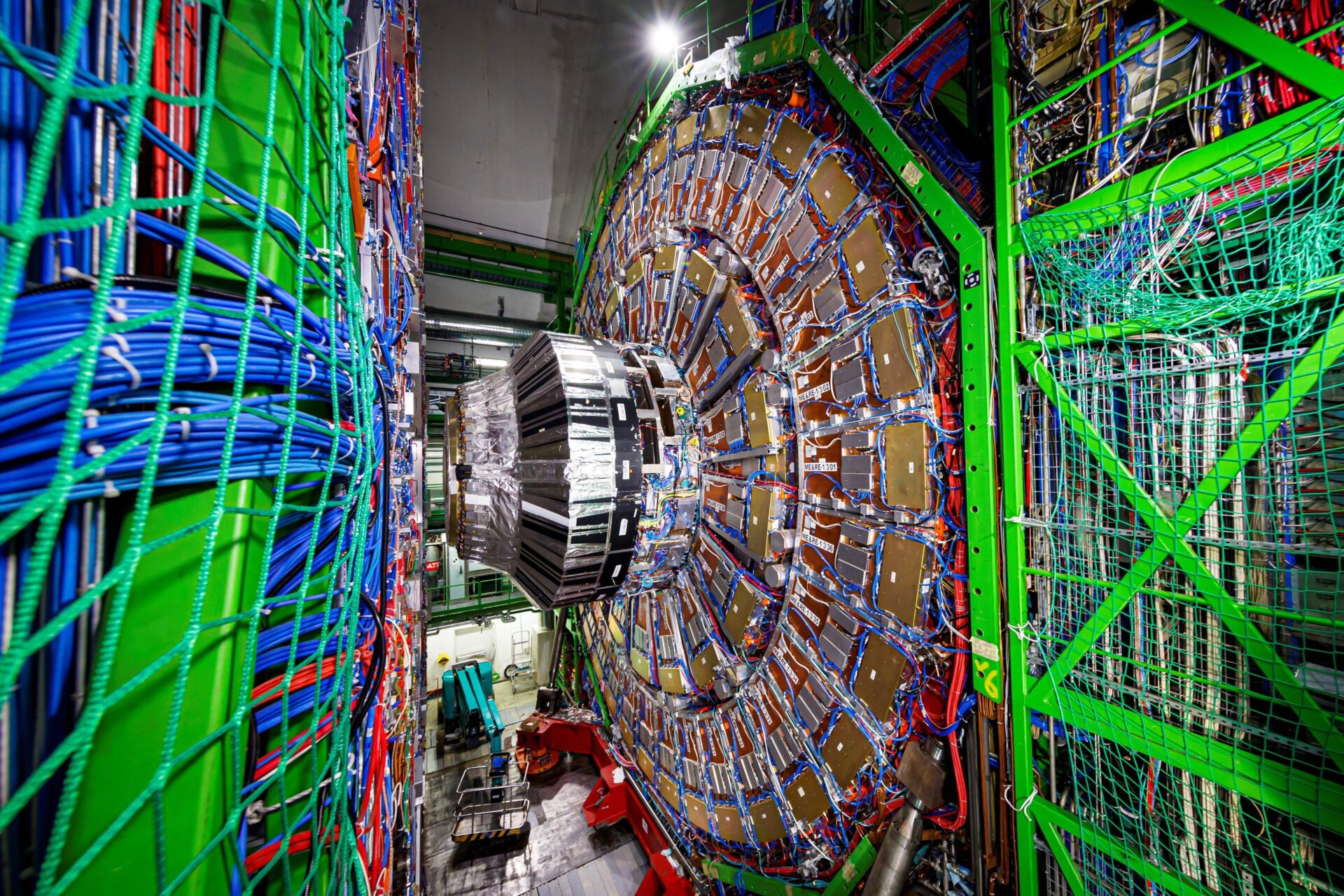The quest to understand the universe’s gravitational wave background has taken a significant leap forward. Astronomers, utilizing 12.5 years of data from the Fermi Gamma-ray Space Telescope, have created a gamma-ray pulsar timing array, a network of cosmic “lighthouses” that may illuminate the elusive ripples in spacetime.
Since the groundbreaking detection of gravitational waves in 2016, scientists have focused on mapping the gravitational wave background – the collective hum of these spacetime ripples. These waves, generated by the violent rotations and collisions of massive celestial bodies like black holes and neutron stars, are detectable on Earth. While instruments like LIGO and Virgo have successfully detected waves from stellar-mass black hole mergers, the hunt for waves from supermassive black hole collisions, which are vastly larger, presents a unique challenge.
 alt text: An artist's impression of two merging supermassive black holes, creating ripples and distortions in the fabric of spacetime around them.
alt text: An artist's impression of two merging supermassive black holes, creating ripples and distortions in the fabric of spacetime around them.
Detecting gravitational waves from stellar-mass black holes requires detectors a few kilometers long, as the waves themselves are relatively short. However, detecting waves from supermassive black hole mergers, which can be trillions of kilometers long, necessitates a detector spanning an entire galaxy, an impossible feat with current technology.
Fortunately, nature provides an alternative: pulsars. These rapidly spinning remnants of dead stars emit predictable pulses of radiation. By meticulously tracking these pulses, astronomers can identify subtle variations in their arrival times, indicative of spacetime distortions caused by gravitational waves.
 alt text: An illustration depicting how a pulsar timing array uses millisecond pulsars to detect gravitational waves by analyzing minute fluctuations in the regularity of their pulse signals across the vastness of space.
alt text: An illustration depicting how a pulsar timing array uses millisecond pulsars to detect gravitational waves by analyzing minute fluctuations in the regularity of their pulse signals across the vastness of space.
By connecting these pulsars into a network, researchers create a galaxy-sized observatory, a pulsar timing array. The recent study published in Science introduces a novel approach, focusing on the gamma radiation emitted by certain pulsars and detected by the Fermi Gamma-ray Space Telescope.
This gamma-ray approach complements existing radio-wave pulsar timing arrays. While radio waves can be disrupted by interstellar electrons, gamma rays remain unaffected, offering a clearer view of gravitational wave signals. This makes the gamma-ray pulsar timing array a more direct probe of the gravitational wave background.
The North American Nanohertz Observatory for Gravitational Waves previously released a 12.5-year dataset from 45 Milky Way pulsars, showing a pattern consistent with preliminary expectations of the gravitational wave background. This data, however, relied on radio telescopes.
 alt text: A simplified visualization of a network of pulsars emitting gamma rays, with lines connecting them to represent the timing array used for gravitational wave detection.
alt text: A simplified visualization of a network of pulsars emitting gamma rays, with lines connecting them to represent the timing array used for gravitational wave detection.
The gravitational wave background, in some ways analogous to the cosmic microwave background (the oldest light in the universe), offers a dynamic view into the universe’s evolution. Unlike the static cosmic microwave background, the gravitational wave background reflects the more recent history of galactic dynamics and supermassive black hole mergers.
Currently, the Fermi approach is less sensitive than radio telescope methods, achieving approximately 30% of the sensitivity of radio pulsar timing arrays. However, researchers anticipate that within five years, Fermi’s sensitivity will rival that of radio telescopes, further enhancing our understanding of the gravitational wave background.










